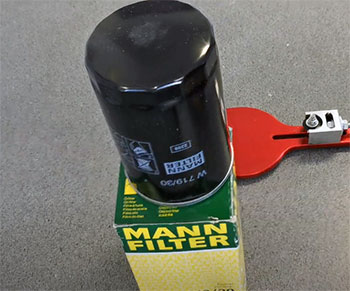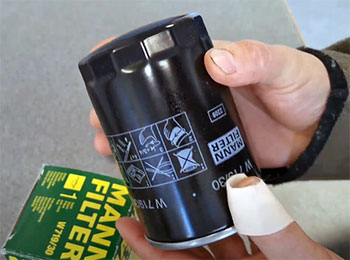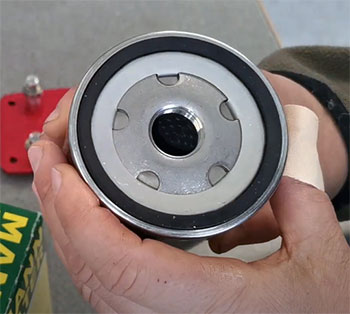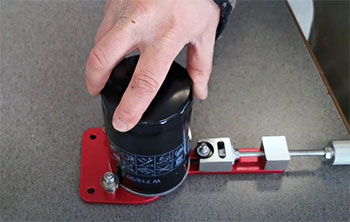When it comes to keeping your car’s engine running smoothly, an oil filter is one of those unsung heroes you don’t think about until something goes wrong.
I’ve spent years tinkering with cars, and I’ve tried my fair share of oil filters, including the Mann oil filter.
While Mann has a solid reputation and is often associated with German engineering, I can’t wholeheartedly recommend it based on my experience and the feedback I’ve seen from other users.
In this article, I’ll share my hands-on experience, break down the pros and cons, offer maintenance tips, and compare Mann to other brands to help you make an informed choice for your vehicle.
My Experience With Mann Oil Filters
I’ve been a DIY car enthusiast for over a decade, and I’ve worked on everything from a beat-up 2003 Honda Civic to a finicky 2015 BMW 3 Series.
When I first came across Mann oil filters, I was drawn in by their reputation for quality and their association with German carmakers like BMW and Volkswagen.
The bright yellow-green packaging screamed “premium,” and the price—usually around $8 to $16 depending on the model—felt like a reasonable investment for something that promised OEM-level performance. I decided to give Mann a shot during an oil change on my BMW, hoping it would live up to the hype.

The installation was straightforward. The filter fit perfectly into the canister, and the threading was smooth, which is always a relief when you’re wrenching under the hood.
I paired it with a high-quality synthetic oil, expecting smooth sailing for the next 7,500 miles.
For the first few weeks, everything seemed fine—no leaks, no weird noises, and the engine ran as expected.
But about 3,000 miles in, I started noticing a faint ticking sound from the engine, especially during cold starts.
It wasn’t loud enough to panic, but it was enough to make me raise an eyebrow.
Curious, I decided to cut open the Mann filter after about 5,000 miles to inspect it. What I found was disappointing.
The filter media looked thinner than I expected, with fewer pleats than some competitors I’ve used, like Mahle or Hengst.
The pleats were also unevenly spaced, which made me question how effectively it was trapping contaminants. I compared it to a used Mahle filter I had from a previous oil change, and the difference was noticeable—Mahle’s media was denser and darker, suggesting it was capturing more gunk. The Mann filter wasn’t falling apart, but it didn’t inspire confidence either.
I also scoured online forums and e-commerce sites to see if others had similar experiences. The reviews were mixed. Some users raved about Mann’s reliability and OEM pedigree, but others reported issues like poor filtration, premature clogging, and even cases where the filter media had started to break down.
One user on a Volkswagen forum mentioned finding bits of filter material in their engine after using a Mann filter, which was alarming. My own experience wasn’t that extreme, but the ticking noise and the lackluster filter media made me hesitant to use Mann again. It’s not a terrible product, but it didn’t live up to the premium reputation I expected.
Read More: My Thoughts On The NAPA Proselect Oil Filter
Pros Of Mann Oil Filters
- Wide availability: You can find Mann filters almost anywhere—auto parts stores, online retailers, you name it. I grabbed mine from a local shop without any hassle, and they’re often stocked for a wide range of vehicles, from European makes to domestic trucks.
- OEM connections: Mann supplies filters to big names like BMW, Mercedes, and Volkswagen, which gives it some street cred. For my BMW, knowing it was an OEM supplier made me feel like I was sticking close to factory standards.
- Affordable pricing: At $8 to $16, Mann filters are competitively priced. They’re not the cheapest, but they’re far from the premium price tags of some boutique brands, making them a decent middle-ground option.
- Solid initial performance: For the first couple thousand miles, I didn’t notice any issues. The filter did its job, and my engine ran smoothly, which is what you’d expect from a brand with Mann’s reputation.
Cons Of Mann Oil Filters

- Inconsistent build quality: My biggest gripe was the filter media. When I cut open the filter, it had fewer pleats and felt flimsier than competitors like Mahle or Hengst. Some users have reported similar issues, with filters made in places like Mexico or Brazil feeling less robust than German-made ones.
- Questionable filtration efficiency: The uneven pleats and thinner media made me doubt how well it was trapping contaminants. Compared to Mahle, which had a denser weave, Mann’s filter seemed like it might let smaller particles slip through over time.
- Mixed customer feedback: Online reviews on sites like Amazon and auto forums paint a spotty picture. While some users love Mann, others have reported premature clogging or even filter media breaking down, which is a dealbreaker for an engine’s health.
- Poor customer service response: I read about one user who contacted Mann’s customer service about a defective filter and got a cold shoulder. They admitted to a bad batch but didn’t offer a recall or apology, which doesn’t inspire confidence in their support.
- Country of origin concerns: Not all Mann filters are made in Germany. Mine was from Mexico, and while it wasn’t terrible, the construction didn’t feel as premium as I expected from a brand touting German engineering.
Maintenance Tips For Mann Oil Filters

Maintaining your car’s oil filter system goes beyond just swapping out the filter during an oil change. If you’re using a Mann oil filter, here are some practical tips to get the most out of it and keep your engine in top shape. These come from my years of wrenching and learning the hard way what works and what doesn’t.
- Stick to regular oil change intervals: Mann filters are designed to handle typical oil change intervals of 5,000 to 7,500 miles for synthetic oil. I made the mistake of pushing mine closer to 8,000 miles once, and the ticking noise I mentioned earlier started creeping in. Check your car’s manual and don’t stretch the interval too far, especially with Mann’s questionable filtration efficiency.
- Inspect the filter during installation: Before you screw on that Mann filter, take a quick look at the threading and the rubber gasket. I’ve found that ensuring the gasket is properly seated prevents leaks. One time, I didn’t double-check, and I ended up with a small drip that took me an hour to clean up.
- Pair with high-quality oil: Mann filters work best with synthetic oils designed for high-performance engines. I used a full-synthetic oil with my BMW, and it helped keep things running smoothly for the first few thousand miles. Cheap conventional oil can thicken in cold weather, putting extra strain on the filter’s bypass valve.
- Monitor engine performance: Keep an ear out for unusual noises, like the ticking I heard. If you notice anything off, it might be worth cutting open the filter to inspect the media. I did this with my Mann filter and was glad I caught the issue before it got worse.
- Check for counterfeits: Mann’s yellow-green packaging is distinctive, but fakes are out there. Always buy from reputable sources and check for a unique serial number on the packaging. I once bought a filter online that looked legit but had sloppy printing on the box, which made me suspicious.
- Dispose of old filters properly: After swapping out your Mann filter, don’t just toss it in the trash. Drain the oil into a container and take it to a recycling center. I keep a dedicated jug for used oil and filters, which makes disposal easier and keeps my conscience clean.
Comparison With Other Brands

When it comes to oil filters, you’ve got options, and Mann isn’t the only player in town. I’ve used several brands over the years, and each has its strengths and weaknesses. Here’s how Mann stacks up against some of the big names I’ve tried, based on my own experience and what I’ve learned from other car enthusiasts.
Mahle
Mahle is another German brand that’s often compared to Mann, especially for European cars. I’ve used Mahle filters on my BMW and Audi, and they’ve consistently impressed me. The filter media is denser, with more pleats—around 70 compared to Mann’s 63 in one comparison I did. This means Mahle can trap more contaminants, which is crucial for keeping your engine clean. The build quality feels more robust, with sturdy end caps and a solid anti-drainback valve that prevents dry starts. Mahle’s filters are often made in Austria, and I’ve never had one feel cheap or poorly constructed. The downside? They’re slightly pricier, usually $10 to $20, and less widely available for non-European cars. Still, for my BMW, Mahle is my go-to over Mann for its superior filtration.
Hengst
Hengst is another German brand that’s a favorite among Mercedes and Volkswagen owners. I tried a Hengst filter on a friend’s Mercedes C-Class, and the construction was top-notch—tight pleats, a solid paper band around the media, and a premium feel that Mann’s Mexican-made filter lacked. Hengst filters are often OEM for high-end German cars, and they’re designed to handle long oil change intervals without breaking a sweat. The catch is availability; I had to order mine online because local shops didn’t stock them. Price-wise, Hengst is in the same ballpark as Mann, but I’d pick it over Mann for its consistent quality and better filtration media.
Bosch
Bosch is a household name, and I’ve used their filters on a Nissan Altima and a Toyota Corolla with good results. Bosch filters strike a balance between quality and affordability, often costing $5 to $12. The filtration media is solid, though not as dense as Mahle’s, and the build quality is reliable across the board. I’ve never had a Bosch filter fail, and they’re widely available, even at big-box stores. Compared to Mann, Bosch feels like a safer bet for non-European cars, and I didn’t notice any performance issues like the ticking I got with Mann. However, Bosch doesn’t have the same OEM pedigree for German cars, so it’s a toss-up depending on your vehicle.
Purflux
Purflux, a French brand, is a go-to for Peugeot and Citroen owners, but I’ve used it on a Renault with decent results. Its patented Chevron pleating design maximizes filtration surface area, which I found impressive when I cut one open—it had a zigzag pattern that Mann’s simpler pleats couldn’t match. Purflux filters are affordable, usually $6 to $15, and they’re OEM for many French cars, ensuring a perfect fit. The downside is that some users have reported a drop in quality since Purflux started producing filters outside France. I didn’t have any issues, but I’d choose Purflux over Mann for French cars due to its innovative design and comparable price.
Fram
Fram gets a bad rap in some circles, but I’ve used their higher-end Ultra Synthetic filters on a Dodge Ram without complaints. The double-layered synthetic media is a step above Mann’s cellulose blend, offering better filtration efficiency—up to 99% at 20 microns, according to Fram’s claims. However, Fram’s cheaper models have been criticized for flimsy construction, like cardboard end caps that can collapse. Mann’s build quality is generally better than Fram’s budget line, but I’d take Fram’s premium filters over Mann for their superior media, especially for American vehicles. Fram is also dirt cheap and widely available, making it a practical choice.
Read More: My Thoughts On Hengst Oil Filters
Frequently Asked Questions (FAQ)
Mann oil filters have a mixed track record. They’re well-regarded for their OEM connections to brands like BMW and Volkswagen, and many users, including myself, have used them without catastrophic issues. However, the build quality can be inconsistent—some filters, especially those made outside Germany, have thinner media and fewer pleats, which can compromise filtration. Online reviews highlight problems like premature clogging or media breakdown, which I didn’t experience but found concerning. If you’re looking for reliability, brands like Mahle or Hengst might be safer bets for consistent quality.
Mann filters are made by Mann+Hummel, a German company founded in 1941. They’re a global leader in filtration, employing over 23,000 people across 80 locations. Mann+Hummel also owns brands like Wix and Purolator, which means some of their filters share manufacturing facilities. While Mann is known for German engineering, not all their filters are made in Germany—mine was from Mexico, and others have reported filters from Brazil or the USA, which can affect quality.
Yes, Mann filters are often original equipment manufacturer (OEM) parts for brands like BMW, Mercedes, Volkswagen, and even some Volvo models. This means they’re factory-installed on many vehicles, which gives them credibility. However, aftermarket Mann filters don’t always match the OEM versions in quality. For example, my BMW’s OEM Mann filter felt sturdier than the aftermarket one I bought. If you’re buying Mann for a German car, double-check the part number to ensure it matches the OEM spec.
Choosing between Bosch and Mann depends on your car. For European vehicles like my BMW, Mann has an edge due to its OEM status and tailored design for German engines. However, I found Bosch to be more consistent across a wider range of vehicles, including my Nissan Altima. Bosch filters are affordable, widely available, and reliable, with no weird noises or filtration issues in my experience. Mann’s inconsistent build quality, especially with non-German-made filters, makes Bosch a safer choice for non-European cars or if you prioritize reliability over brand prestige.
Conclusion: For Mann Oil Filters
After using Mann oil filters and digging into their performance, I can’t fully recommend them. While they offer decent initial performance and OEM connections, the inconsistent build quality and mixed user feedback raise red flags. For the same price or a bit more, brands like Mahle or Hengst offer better filtration and reliability, especially for European cars. If you’re set on Mann, stick to reputable sellers and check the country of origin. Otherwise, explore other options to keep your engine running smoothly.
